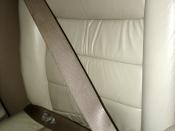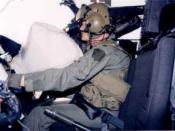The potential dangers of loose objects in vehicles are strongly associated with Newton's First Law of Motion, inertia.
Inertia is when an object in motion tries to stay in motion, and an object at rest tries to remain at rest, unless the object is acted upon by an outside force.
For example, say a car is traveling along a straight road.
Loose objects in the auto are "acted upon" by the body, seats, or some other part of the vehicle (whatever is touching a loose object), whenever the whole thing accelerates. The two most important things related to this are:
1. "Velocity" is a concept that includes both the speed and the direction of motion
2. "Acceleration" exists whenever there is any change in a velocity
Let us first return to the straight road, and magically do two things:
1) Stop the car instantly.
2) Turn the car so that if faces left, also instantly.
What happens to all the loose objects inside the car? They are still going to obey the First Law of Motion, and try to continue going down the straight road. However, since the car is now both stopped and facing left, the right wall of the car is in everything's way. At that moment everything flies towards the right wall, and the loose objects crash hard against it. Also, the driver and the passenger(s) would also smash into the right wall.
If the car was extremely heavy, or was traveling at a considerable speed, then the force of the crash would be greater. This is because of Newton's second law, F=ma, the larger the acceleration or mass, the greater the force. This makes it obvious that loose objects in vehicles is dangerous and should be placed in compartments provided.
The whole point of this...


